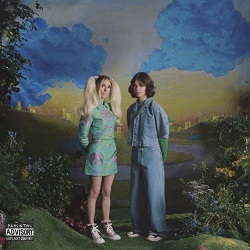New jazz wave takes different directions
I love to keep my finger on the pulse of jazz. Maybe it comes from being so close to Kansas City, one of the genre's most important places historically. Sadly though, according to Nielsen reports jazz is one of the least-popular genres behind classical and children's. It's come a long way since being the most popular when big bands filled dance halls.
Jazz saw a small spike in popularity in recent years as younger fans tire of pop music and look for instrumental alternatives. Naturally, younger musicians carry the torch and shape the genre with their own tastes and influences.
I've been listening to three distinct modern voices in jazz lately. I'm not sure they could sound more different from each other. The Comet Is Coming is under 40 years old, the other two are under 30, and the performers are a mix of several nationalities. Each has a unique voice and adds their own stylistic fold while remaining clearly jazz in the traditional sense. Despite the genre's stuffy reputation, none of them are boring. They are vibrant and engaging all through their albums.
DOMi & JD Beck Not Tight (CD | Digital)
 This Gen Z duo have been called child prodigies and it's not hard to see why. The French pianist DOMi Louna started playing piano at age 3 and studied at the Conservatory of Paris and Berklee College of Music. American drummer JD Beck started piano at 5 before switching to drums. DOMi can also play drums and that mutual understanding surely helps their mind-meld, airtight playing.
This Gen Z duo have been called child prodigies and it's not hard to see why. The French pianist DOMi Louna started playing piano at age 3 and studied at the Conservatory of Paris and Berklee College of Music. American drummer JD Beck started piano at 5 before switching to drums. DOMi can also play drums and that mutual understanding surely helps their mind-meld, airtight playing.Their Instagram jams caught the attention of multi-instrumental soul singer Anderson .Paak who signed them. He appears on this album twice along with a slew of other big names in funk and indie. Herbie Hancock dusts off his vocoder, Thundercat lends his bass and vocals, Mac DeMarco croons, Snoop Dogg and Busta Rhymes rap and Kurt Rosenwinkel lends '70s sounding fusion guitar licks.
That kind of star power is unusual for a first album, not to mention it's on the legendary Blue Note label. This speaks to the duo's virtuosity and winning personality to draw such heavy-hitting mentors. That fun personality comes through even on the instrumental tracks, and you see it when they play. But it's underlined by a sense of anxiety as songs race a breakneck pace. While the vintage keyboards and chill hip-hop drumbeats ease along one moment, they play with ambiguous chords and key changes that build tension as often as they resolve it. For example, the only song the duo sing solo, "U Don't Have to Rob Me," recounts a true knifepoint mugging with tongue-in-cheek.
The Comet Is Coming Hyper-Dimensional Expansion Beam (CD | Digital)
 I'd not heard of this London-based trio before but their apocalyptic name and astrophysical blueprint cover caught my eye. The eclectic group formed when saxophonist Shabaka Hutchings joined keys-and-drums electronic duo Soccer96 on stage live one night, impromptu. The combination of the driving, dancier elements of Danalogue and Betamax (the duo's real names bolded) with Shabaka's intense, mesmerizing saxophone worked so well they're now in their 10th year. In the meantime, the duo has continued as Soccer96 and Hutchings with his jazz band Sons of Kemet.
I'd not heard of this London-based trio before but their apocalyptic name and astrophysical blueprint cover caught my eye. The eclectic group formed when saxophonist Shabaka Hutchings joined keys-and-drums electronic duo Soccer96 on stage live one night, impromptu. The combination of the driving, dancier elements of Danalogue and Betamax (the duo's real names bolded) with Shabaka's intense, mesmerizing saxophone worked so well they're now in their 10th year. In the meantime, the duo has continued as Soccer96 and Hutchings with his jazz band Sons of Kemet.With every song stylized in ALL CAPS, you get a sense of the urgency The Comet Is Coming bring. You'll probably be able to tell pretty quickly if they're for you or not. The most polarizing part of this album is the repetition of the saxophone. Hutchings hammers just a few notes with the fierce staccato of a boxer, varying the intensity but not the melody. He's less interested in being lyrical than using the sax as another texture, no different from a drum or repeating synth. "AFTERMATH" with its arpeggio synth and rain sounds like a John Carpenter soundtrack. By the finale "MYSTIK" the trio ratchets up the intensity so much you might feel your brain splitting. This is better music for exercising, night driving or setting a new hi-score than relaxing to.
Cecil Alexander Introducing (CD)
 If you're in the mood for something more traditional, guitarist Cecil Alexander's first album may be your speed. The Michigan-born guitarist graduated in 2016 from Berklee College of Music, but has already locked down a position as professor there! Before that he won jazz competitions and performed in some of the nation's biggest concert halls. He caught the aforementioned Kurt Rosenwinkel's attention who signed Alexander to his label. Despite this only being his first album, he's already well known for instructing jazz guitar in online videos too.
If you're in the mood for something more traditional, guitarist Cecil Alexander's first album may be your speed. The Michigan-born guitarist graduated in 2016 from Berklee College of Music, but has already locked down a position as professor there! Before that he won jazz competitions and performed in some of the nation's biggest concert halls. He caught the aforementioned Kurt Rosenwinkel's attention who signed Alexander to his label. Despite this only being his first album, he's already well known for instructing jazz guitar in online videos too.Cecil Alexander's guitar style is assured and buttery smooth. The whole album has the comfy, laid back feel of the wood-paneled living room on the cover. He's joined by Will Gorman on a Hammond organ and Steven Crammer on drums. Alexander covers tunes by Coltrane, Duke and Bobby Hutcherson for about half the album while mixing in his own compositions, which fit that classic style.
Influenced by George Benson, he shares in an easygoing style that hides a complexity beneath its pop friendliness. While this makes for great Sunday afternoon background listening, staying completely instrumental, it also rewards close listening. It's amazing to realize just how intricate and dense some of the finger-work is, yet it always remains light and conversational. The band sticks to the standard structure of solos bookended by refrains, though they know just how to ebb and flow the intensity with that gospel organ sound.
The evolution
While I never see it promoted by Spotify or Apple Music, I feel like jazz continues to find a way. By this point in time, there's likely a specific style of jazz that'll appeal to you. Whether you like a comedic element, hip-hop influence, something you can rock out to or an old-school bebop sound. It will continue to evolve with the rest of music and remain one of America's unique genre contributions.














